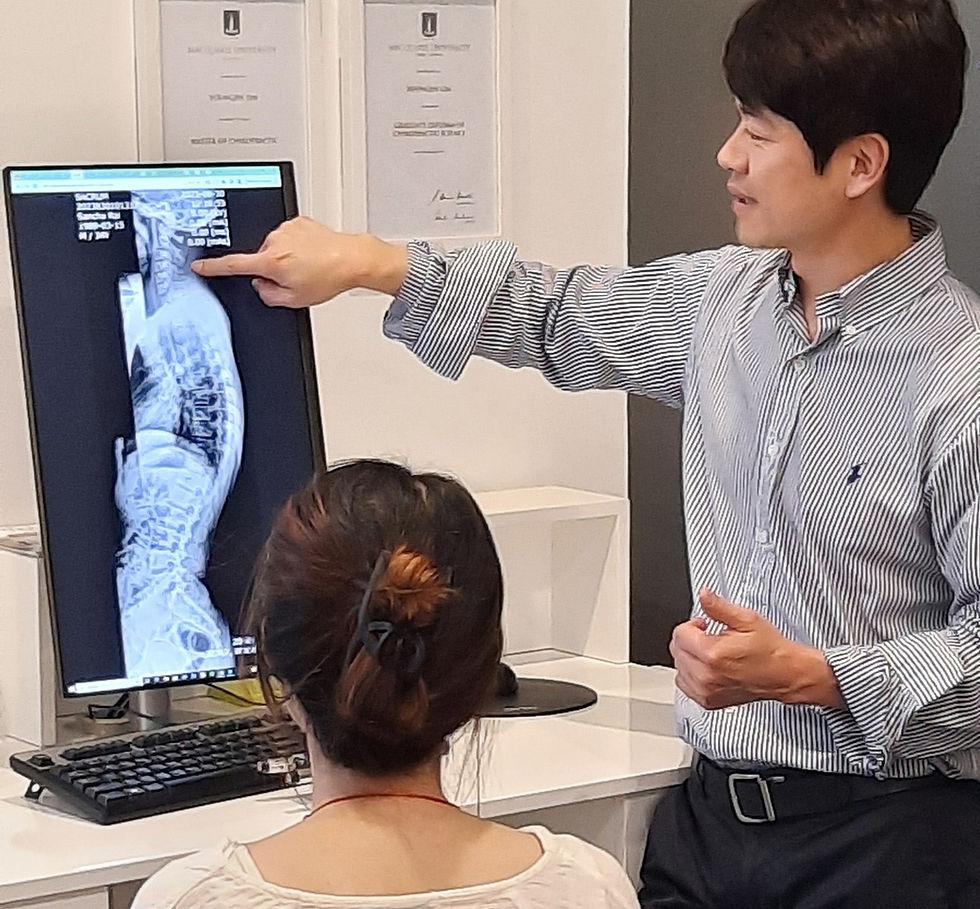5 Simple Habits from your Canberra Chiropractor at Motion Wellness to Keep Your Back Healthy
- Admin
- Oct 10
- 3 min read
Introduction
When patients come in for chiropractic care at Motion Wellness, we often see that their progress is limited—not because the adjustments aren’t working, but because their day-to-day habits are counteracting them. The great news is: small, consistent habits can amplify your outcomes. In this post, we’ll share 5 simple habits you can incorporate (starting today) to support your back, neck, posture—and make the most of your chiropractic care in Canberra.
Habit #1: Be mindful about your sitting posture & screen ergonomics
Since many of us sit at desks or stare at screens, the way we sit makes a big difference. Slouching, forward head posture, or “tech neck” puts strain on spinal joints and muscles.
Tips:
Keep your screen at eye level so your neck stays neutral.
Use a chair that supports the lumbar curve (or add a cushion).
Every 25–30 minutes, stand, stretch, or walk a little.
Use reminders (phone alert or sticky notes) to check your posture.
This habit supports what we’re doing inside the clinic. Because poor posture continuously loads stressed areas, it can slow down your improvement.
Habit #2: Do your “homework” stretches & mobility exercises
During your treatment plan at Motion Wellness, your Canberra chiropractor or therapist may suggest specific stretches or exercises. These are not optional extras — they extend the benefit of your spinal adjustments.
Examples (check with your practitioner first):• Cat-cow, gentle spinal flexion/extension• Thoracic rotations• Pec stretches (for tight chest muscles pulling shoulders forward)• Hip flexor stretches
Perform them daily or at least on your non-adjustment days.
When you move well between sessions, your body is more adaptable, which helps reduce relapse and speeds recovery.
Habit #3: Maintain consistent hydration and anti-inflammatory nutrition
Your spinal joints, discs, ligaments, and muscles all do better when your body is well nourished and hydrated.
Drink plenty of water (aim for 30–35 mL per kg of body weight, or more if active).
Focus on nutrient-dense foods: leafy greens, omega-3 sources (fish, flax, walnuts), lean protein, colourful fruits and vegetables.
Limit inflammatory foods: excess sugar, processed foods, trans fats.
Use gentle anti-inflammatory support (e.g. turmeric, ginger) if approved by your GP.
This internal support helps tissues heal faster and better respond to adjustment.
Habit #4: Prioritize quality rest & sleep posture
Healing and adaptation happen during your downtime — especially sleep.
Use a supportive pillow that keeps your neck in neutral alignment (not over-extended or cramped).
Sleep on your back or side (avoid stomach sleeping).
Try to limit screen time for at least 30 minutes before bed (blue light can disrupt sleep).
Keep your bedroom dark, cool, and quiet to promote deeper rest.
Better rest means your body is more ready to respond positively to each chiropractic adjustment session.
Habit #5: Move with intention — regular light activity & breaks
Your body thrives when it moves — not just in structured sessions, but throughout the day.
Aim for gentle walking, cycling, or swimming on off days from chiropractic adjustments.
Use movement breaks every hour (even a 1–2 minute walk helps).
Avoid sudden jerky movements—warm up before lifting or twisting tasks.
Engage in low-impact movement practices like yoga or Pilates (under guidance) to aid flexibility, core strength, and body awareness.
These habits keep your joints mobile, maintain muscular balance, and reduce stiffness between treatments.

Bonus Habit: Communication & feedback with your chiropractor
You’re not a passive recipient of care — you’re a partner in your recovery.
Always tell your chiropractor about any changes in symptoms (better or worse).
Ask questions: “Why are we doing this adjustment?” “What’s happening inside my spine?” “How should I modify my daily tasks?”
Let us know your lifestyle, job demands, hobbies, and stresses — so we can tailor your plan.
At Motion Wellness, we believe in whole-person care: chiropractic + counselling + massage + movement. The better we understand your body and life, the more precise we can be.
How These Habits Tie to Your Chiropractic Journey
They reduce the strain placed on joints we adjust, making each session more effective.
They promote better tissue healing, so the changes we make inside your spine are more stable.
They minimise re-injury or regression between visits.
They empower you as an active participant (which leads to better long-term outcomes).
Final Thoughts & Call to Action
If you’re currently under care at Motion Wellness in Canberra (Macquarie or Lyneham), pick one habit from above to focus on this week. Let us know how it goes when you come in next time — we’ll adjust your plan accordingly.
If you haven’t started chiropractic care yet, and you’re experiencing back pain, neck pain, posture issues, “tech neck,” sciatica, RSI, or headaches, we’d love to help guide you toward movement, comfort, and better health. Book an appointment with us today to begin your journey.


Comments